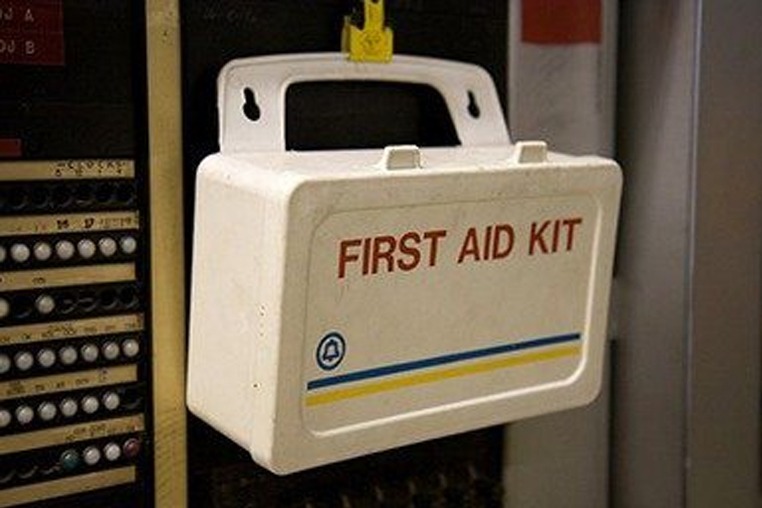First Aid Course in Canberra. Nationally Recognised Training and Certificate. Free First Aid Manual. Free Parking. Free CPR Face Mask.
If your looking for a course in Syn ey see our team at www.simpleinstruction.com.au
By JOHN McCOY
HD Media
HUNTINGTON – Dr. Chuck Clements likes to be prepared. Clements, who teaches wilderness first aid to students at the Marshall University’s Joan C. Edwards School of Medicine, believes in carrying first-aid kits suited to specific outdoor activities: backpacking, bicycling, whitewater rafting, skiing, etc.
“If possible, you should build a first-aid kit based on what you intend to be doing,” Clements said. “But there’s a basic first-aid kit everyone can, and should, carry. It weighs just a few ounces, and it fits into a large sandwich bag. With it, you can handle just about any wound or fracture – and wounds and fractures are 80 percent of what you’ll encounter in the field.”
Most of the items in Clements’ basic kit are used to stop bleeding.
“The most common injuries are scrapes, scratches and cuts,” he said. “The items in this kit will stop bleeding even if there’s major trauma, or even an [accidental] amputation.”
He said bleeding from most wounds can be stanched with a simple 4-by-4-inch gauze pad.
“If the cut is above the waist, you can simply put pressure on the wound with the pad and hold it in place while you seek help,” he continued.
If the wound is on a leg, he said the pad should be held in place with some sort of wrap, either gauze or elastic.
For deeper wounds with major bleeding, Clements packs a secret weapon – a pad impregnated with a product called QuikClot.
“If there’s a significant bleed, QuikClot will stop it,” he said. “You apply it, and the bleeding stops just like that. Once the bleeding is stopped, you can wrap over the pad to hold it in place.” The pads cost about $10, and are widely available online.
Clements said there’s also a QuikClot product called a Trauma Pak, which costs about $20.
“It’s just about everything you need to stop bleeding, and it will fit into a hip pocket,” he said.
Even though he doesn’t consider it something that’s likely to be used, Clements’ basic kit also includes a CAT Tourniquet.
“CAT stands for Combat Application Tourniquet,” he explained. “It’s designed to be applied easily, using only one hand.”
As he said that, Clements unfurled the tourniquet, slipped it onto his left arm and tightened it in about 5 seconds.
“You really wouldn’t need a tourniquet unless there was major arterial bleeding or an amputation, but since a CAT tourniquet takes up very little space and only weighs a couple of ounces, so why not put it in your kit just in case?”
The brand-name CAT Tourniquet costs about $25, but Clements said knock-offs are available for as little as $10.
Clements’ kit also includes a handful of surgical gloves.
“Your hands might be dirty, so why not take some gloves so you can be as clean as possible while treating a wound?” he asked.
As hard as it might be to believe, the product Clements uses to treat fractures also fits into his sandwich-bag-sized kit. It’s called a SAM splint. SAM stands for Structural Aluminum Malleable, and that pretty succinctly describes what it is and how it works.
The splint incorporates a thin sheet of aircraft aluminum sandwiched between two layers of lightweight closed-cell foam. Fully extended, it measures 36 inches long by 51/2 inches wide and about 1/4 inch thick. It’s designed to be molded around the broken limb and wrapped in place using gauze or an elastic bandage.
“It can be bent and folded to splint just about any fracture you’ll encounter, and you can also fold it down so it fits nicely into that sandwich bag,” Clements said. “Each splint costs about $10, but you can get knock-offs for as little as $3 apiece.”
Other summertime hazards include sunburn, exposure to poison ivy and bee stings.
“With those in mind, it wouldn’t hurt to tuck a small tube of SPF-30-or-higher sun block into your kit, as well as some Bendadryl tablets,” Clements said.
Using two fingers, he grabbed his sandwich-bag kit by one corner and held it up.
“I’m all for smaller and lighter,” he said. “This doesn’t take up much space, and it weighs almost nothing. It’s good insurance to have if you’re going to be outdoors.”
Book a first aid course with us at www.canberrafirstaid.com

